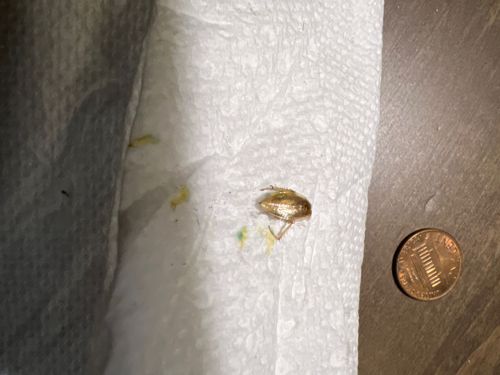Leafhopper (likely a species of Cicadellidae family)
Scientific Name: Cicadellidae (family)
Order & Family: Order: Hemiptera, Family: Cicadellidae
Size: Most leafhoppers are small, typically ranging from 2 mm to 15 mm in length. The one in the image appears to be on the smaller side, especially when compared to the penny.

Natural Habitat
Leafhoppers are found in a wide variety of habitats, including grasslands, agricultural fields, forests, gardens, and urban landscapes. They primarily inhabit vegetation, feeding on plant sap.
Diet & Feeding
Leafhoppers are phytophagous, meaning they feed on plant sap. They use their piercing-sucking mouthparts to extract sap from the phloem or xylem of plants. Different species may specialize on certain types of plants (e.g., trees, shrubs, grasses, crops).
Behavior Patterns
Leafhoppers are known for their distinctive hopping ability, which they use to escape predators. Many species are active during the day. They lay eggs on plant stems or leaves, and nymphs (immature leafhoppers) typically resemble smaller, wingless versions of the adults. Some species migrate over long distances. They can be found individually or in small groups.
Risks & Benefits
Potential risks include being agricultural pests. Many species of leafhoppers can cause significant damage to crops by direct feeding (stunting growth, causing wilting or leaf deformation) and, more importantly, by transmitting plant diseases (viruses, bacteria, phytoplasmas). They generally pose no direct risk or harm to humans. As for benefits, they are a food source for various predators (e.g., birds, spiders, other insects) and contribute to the biodiversity of ecosystems. Some species may aid in pollination for certain plants, although this is not their primary ecological role.
Identified on: 9/11/2025